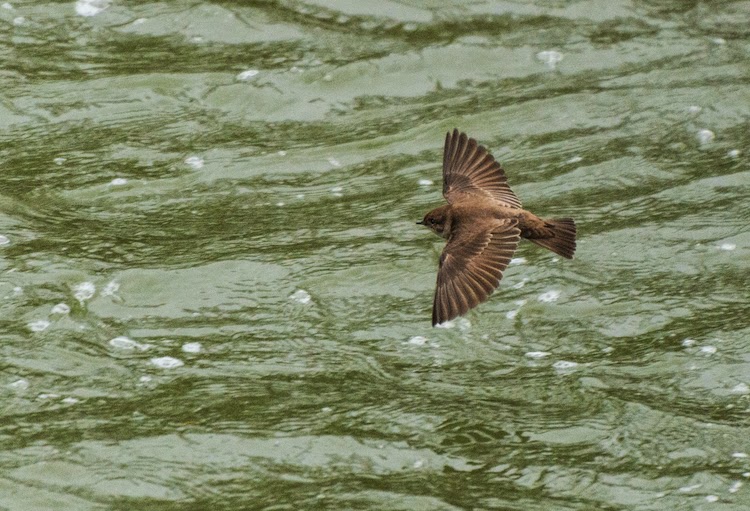One of my favorite riverbank birds is the Eastern Phoebe, a smallish, gray-brown songbird with buff underbelly and rather oversized head.
Phoebes are members of the tyrant flycatcher family. Common hereabouts. And in spite of the "Eastern" prefix, found throughout much of the United States and Canada except for the deep South and arid Southwest.
The alert and dapper little bird takes it names from the male's raspy, two-note song: fee-bee! fee-bee! Moreover, the phoebe is one of the earliest winter migrants to return to their annual breeding grounds each spring. Thus, when you hear their distinctive, eponymous call in mid-March, it's always a welcome confirmation that—regardless of current weather—vernal change is already underway.
Phoebes are, as their flycatcher designation suggests, primarily insect eaters. And flying insects—mayflies, caddisflies, bees, wasps, dragonflies, beetles, butterflies, moths, cicadas, etc.—make up the bulk of their diet. They like to hunt fairly open areas, and are especially fond of streams, which regularly offer rich hatches of aquatic insects.
From a low perch, they sit—often with their tail bobbing, as if in nervous anticipation—carefully watching an area for bugs. When some flying tidbit is spotted, the phoebe makes a swiftly-launched aerial intercept, quickly nailing their prey with deadly accuracy. Depending on the size of their hapless victim, they'll either eat on-the-wing, or return to their observation perch for a more leisurely meal.
The phoebe in the photo (yeah, I'm just guessing it's the same bird) has been perching and feeding from this dead limb near the end of the deck all week, regularly singing its name…fee-bee! fee-bee!…and of course, keeping me pleasantly distracted.
–––––––––
























